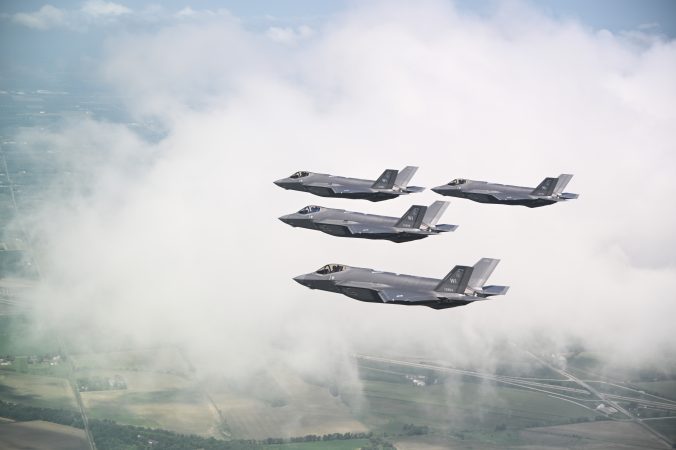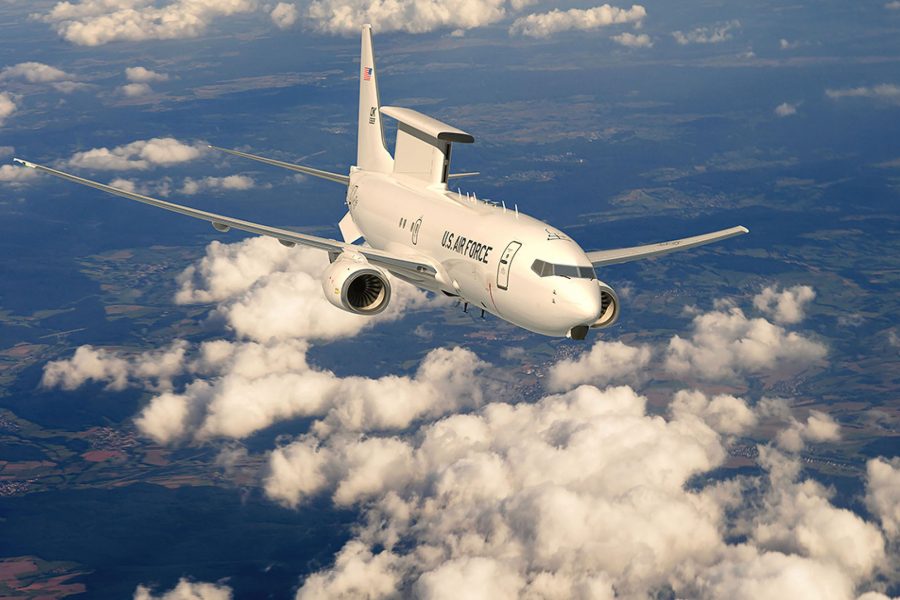Six former Air Force Chiefs of Staff and nine other retired 4-star generals joined Air & Space Forces Association leadership in calling on Congress to triple the number of F-35A fighters the Air Force buys in fiscal 2026 and to reinstate funding for the E-7 Wedgetail battle management platform that was omitted from the Pentagon’s 2026 budget request.
The wide swath of retired leaders include:
- Gen. Joseph W. Ralston, former Vice Chairman of the Joint Chiefs of Staff and Supreme Allied Commander, Europe
- Gen. Merrill A. McPeak, 14th Chief of Staff of the Air Force
- Gen. Ronald R. Fogleman, 15th Chief of Staff of the Air Force
- Gen. Michael E. Ryan, 16th Chief of Staff of the Air Force
- Gen. John P. Jumper, 17th Chief of Staff of the Air Force
- Gen. T. Michael Moseley, 18th Chief of Staff of the Air Force
- Gen. Mark A. Welsh III, 20th Chief of Staff of the Air Force
- Gen. John M. Loh, former Vice Chief of Staff and Air Combat Command boss
- Gen. Ralph E. Eberhart, the first commander of U.S. Northern Command
- Gen. Lori J. Robinson, former NORTHCOM commander
- Gen. John D.W. Corley, former Vice Chief of Staff and ACC commander
- Gen. Philip M. Breedlove, former Vice Chief of Staff and Supreme Allied Commander, Europe
- Gen. Kevin Chilton, former commander of U.S. Strategic Command
- Gen. Herbert J. “Hawk” Carlisle, former ACC commander
- Gen. Robin Rand, former commander of Air Force Global Strike Command
- Gen. Lance W. Lord, former commander of Air Force Space Command
They joined AFA Chairman retired Brig. Gen. Bernie Skoch; AFA President retired Lt. Gen. Burt Field, and retired Lt. Gen. David Deptula, Dean of AFA’s Mitchell Institute in a letter that challenged the administration’s plan to cancel the E-7 and to build just 24 F-35As.
“During a period of heightened tension throughout the world, we believe such reductions will severely and unnecessarily undermine our service members’ ability to deter, and if necessary, prevail in future conflicts,” they wrote to the Republican and Democratic leaders in the House and Senate, as well as the members of the House and Senate Armed Services committees and House and Senate Appropriations defense subcommittees. “As the congressional defense authorization and appropriations committees continue their important work in preparing legislation for Fiscal Year 2026, we respectfully request the Congress provide authorization and funding to procure 75 F-35As and restore E-7 funding in full.”
The House Appropriations Committee and its defense subcommittee have already taken some action toward these ends. Their version of the fiscal 2026 Defense Appropriations bill includes $4.5 billion for 42 F-35As and $500 million to continue development of the E-7.

But AFA leaders and the former four-stars argue that those steps are insufficient given the ongoing requirement to field 1,763 F-35As to fully equip the Air Force to meet the National Defense Strategy.
Noting that U.S. and Israeli F-35s were “integral to the success of Operation Midnight Hammer” in taking out Iran’s nuclear sites last month and in making that mission possible by crushing Iran’s air defenses to swiftly achieve air superiority over Iran, the letter also emphasized progress made by F-35 maker Lockheed-Martin toward certifying its Tech Refresh 3 upgrade. “That means the hardware and software upgrades are now available enabling even greater improvements in the F-35,” the generals wrote.
The generals also challenged the administration’s decision to terminate the E-7 Wedgetail program and to instead acquire additional E-2 Hawkeye aircraft as a stopgap measure.
“The E-2 is unable to meet the combatant command requirements for theater-wide airborne command and control. That is not the mission for which it is designed,” the wrote. “Additionally, the E-7 can perform missions different from traditional AWACS roles that will be critical to the China contingency.”
The Air Force’s official explanation for canceling the E-7 is that future space-based solutions will eventually be available. But the generals said such systems are still not yet in hand.
“We have high confidence the U.S. Space Force will develop and deploy a space-based air battle management system,” the wrote. “However, the scientific and engineering hurdles to accomplish this goal are daunting and the timeline to success is unclear. Since having a robust tracking and battle management system is fundamental to projecting airpower and winning conflicts, prudence demands we acquire sufficient numbers of E-7s to prevail whenever the next conflict unfolds.”
They applauded “the foresight of the House Appropriations Committee and House Defense Appropriations Subcommittee in their allocation of funding for the E-7 and respectfully request additional resources be committed so the aircraft can be deployed at the earliest opportunity.”


